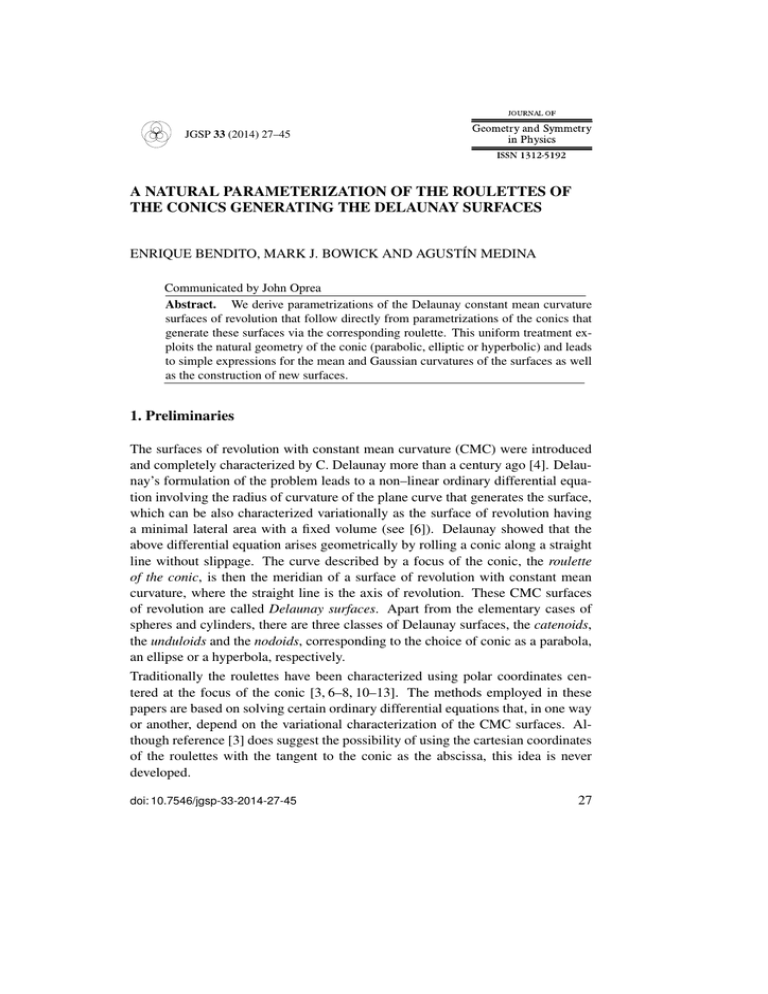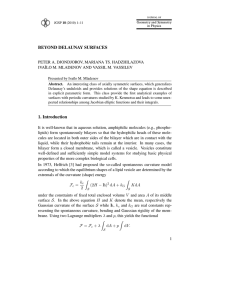A NATURAL PARAMETERIZATION OF THE ROULETTES OF
advertisement

JGSP 33 (2014) 27–45 A NATURAL PARAMETERIZATION OF THE ROULETTES OF THE CONICS GENERATING THE DELAUNAY SURFACES ENRIQUE BENDITO, MARK J. BOWICK AND AGUSTÍN MEDINA Communicated by John Oprea Abstract. We derive parametrizations of the Delaunay constant mean curvature surfaces of revolution that follow directly from parametrizations of the conics that generate these surfaces via the corresponding roulette. This uniform treatment exploits the natural geometry of the conic (parabolic, elliptic or hyperbolic) and leads to simple expressions for the mean and Gaussian curvatures of the surfaces as well as the construction of new surfaces. 1. Preliminaries The surfaces of revolution with constant mean curvature (CMC) were introduced and completely characterized by C. Delaunay more than a century ago [4]. Delaunay’s formulation of the problem leads to a non–linear ordinary differential equation involving the radius of curvature of the plane curve that generates the surface, which can be also characterized variationally as the surface of revolution having a minimal lateral area with a fixed volume (see [6]). Delaunay showed that the above differential equation arises geometrically by rolling a conic along a straight line without slippage. The curve described by a focus of the conic, the roulette of the conic, is then the meridian of a surface of revolution with constant mean curvature, where the straight line is the axis of revolution. These CMC surfaces of revolution are called Delaunay surfaces. Apart from the elementary cases of spheres and cylinders, there are three classes of Delaunay surfaces, the catenoids, the unduloids and the nodoids, corresponding to the choice of conic as a parabola, an ellipse or a hyperbola, respectively. Traditionally the roulettes have been characterized using polar coordinates centered at the focus of the conic [3, 6–8, 10–13]. The methods employed in these papers are based on solving certain ordinary differential equations that, in one way or another, depend on the variational characterization of the CMC surfaces. Although reference [3] does suggest the possibility of using the cartesian coordinates of the roulettes with the tangent to the conic as the abscissa, this idea is never developed. doi: 10.7546/jgsp-33-2014-27-45 27


